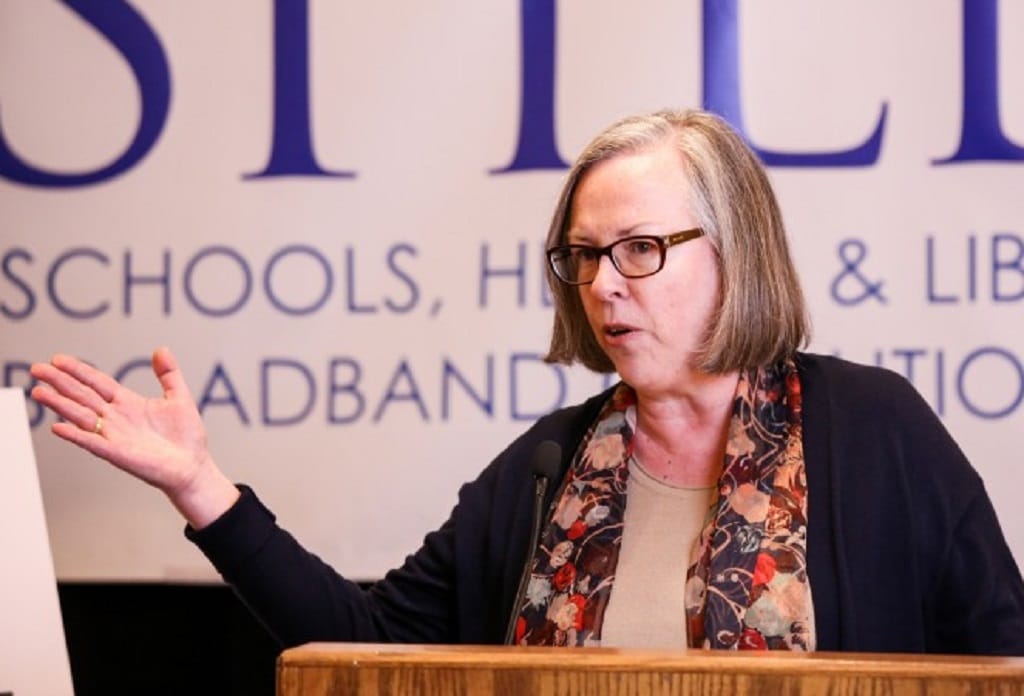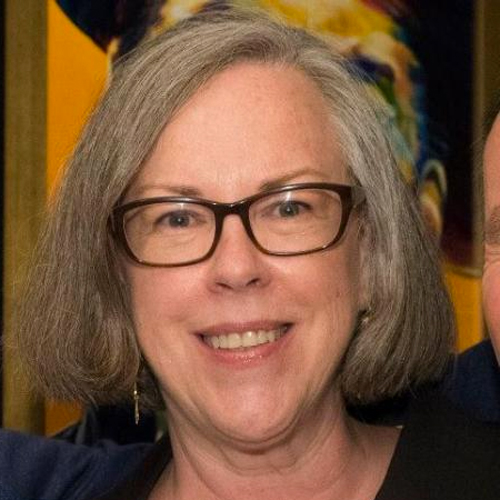Adrianne Furniss: Lifeline Needs A Lifeline
The FCC should hit the pause button on a current plan to zero out support for voice-only services.
Broadband Breakfast

In less than three months, nearly 800,000 low-income people who receive telephone subsidies through the Universal Service Fund’s Lifeline program will be negatively impacted by changes scheduled to go into effect at the Federal Communications Commission on December 1. That is one of the most troubling — and pressing — conclusions of an independent evaluation of the FCC’s Lifeline program conducted by Grant Thornton. As the COVID-19 pandemic rages on, the FCC must act now to ensure people can retain essential communications services.
As of June 20, 2021, approximately 6.9 million subscribers were enrolled in the Lifeline program; most (approximately 94 percent) are enrolled in supported wireless plans. Voice service remains a desired service for both Lifeline subscribers and the general American consumer. Only 1 percent of surveyed American adults live in a home with neither fixed nor mobile voice service, and mobile-only voice subscribers comprise more than 60 percent of U.S. households.
In 2016, the FCC adopted a comprehensive reform and modernization of the Lifeline program. For the first time, the FCC included broadband as a supported service in the program. Lifeline program rules allowed support for stand-alone mobile (think cell phone) or fixed broadband Internet access service (think home broadband service delivered over a wire), as well as bundles including fixed or mobile voice and broadband. The 2016 decision also set in motion a plan to zero-out support for voice-only services.
In its February 2021 report, Thornton found that the phase-down and ultimate phase-out of voice services by December 1, 2021 may negatively impact 797,454 Lifeline consumers (that’s over 10 percent of all Lifeline enrollees) who use voice-only services for fundamental needs. So that’s nearly 800,000 households that could face being disconnected from phone service this winter.
The FCC needs to change course and help more Americans keep connected to communications services that are essential to navigate the ongoing public health and economic crisis.
And it needs to act before December 1.
Most importantly, the FCC should act swiftly and hit the pause button on the 2016 plan to zero-out support for voice-only services. During the pandemic, the stakes are just too high for anyone to be disconnected from essential communications networks.
Then the FCC should launch a new effort to reform and further modernize the Lifeline program, informed by what we’ve witnessed during COVID, and the findings in Thornton’s and the FCC’s own recent review of the Lifeline program.
First, Lifeline needs to have foundational governance documents—such as strategic plans, performance objectives, and an integrated communications plan—to assist in the longitudinal success and guidance of the program.
Second, the FCC has to consider raising Lifeline’s monthly subsidy, $9.25, so it can make more meaningful services affordable for low-income families. Home-broadband prices (both for fixed and wireless service) remain disproportionately high when compared to the Lifeline program subsidy. The FCC should evaluate minimum service standards in relation to the average cost of wireless, wireline, and broadband data plans and determine if the subsidy will cover all, or even the majority of costs to provide Lifeline services.
Third, the FCC must adopt changes in the program so it better benefits the people it was created to connect.
- The FCC should seek to understand the composition of Lifeline households and what services various members need (i.e., school-aged children, telecommuters, etc.). The minimum services supported by Lifeline should address the needs of the entire household.
- Just 25 percent of the people eligible to participate in the Lifeline program actually enroll. The FCC must understand why and should consider ways to improve awareness of the Lifeline program. One idea is to partner with other federal benefit programs, and the state agencies that administer those programs, to not only increase outreach about Lifeline, but ideally to integrate Lifeline’s application processes into those program applications.
- The FCC should adopt program rules that incorporate Lifeline consumer feedback to ensure the program works for the most vulnerable people in society.
Fourth, changes in the Lifeline program should encourage all telecommunications and broadband service providers to compete to serve low-income households in their service areas.

Finally, the FCC should also consider revising its measure of affordability of broadband for low-income consumers. Currently, the FCC considers “affordable service” as 2 percent of disposable income of those below 135 percent of the federal poverty level. Instead, the FCC should consider affordability in the context of a subscriber’s purchasing power in a geographic location and balanced with availability of services and choice of providers. The FCC should evaluate the pricing packages of voice and broadband services offered by Lifeline carriers and provide assurance that packages offered are in the reasonable standard of affordability for low-income consumers. And the FCC should institute a structured process to regularly review the Lifeline program’s pricing packages and incorporate measures of both the subsidy rate and service standards for similar programs (like the Emergency Broadband Benefit), income statistics of current consumers, and the percentage of Lifeline subscribers who pay out of pocket for services.
The commitment to connecting people with low incomes to essential communications services is not new. But the past 18 months have offered stark reminders of the importance of universal service. We need the FCC to act now to keep everyone connected. And we need the FCC to update the Lifeline program so everyone can rely on a basic level of connectivity no matter how much income they have.
Adrianne Furniss is the Executive Director of the Benton Institute for Broadband and Society. She manages the institute’s staff and relationships with Benton experts, partners, and supporters in service to Benton’s mission and in consultation with Benton’s Trustees and Board of Directors. Previously, she held management positions at both non-profit and for-profit content creation companies, focused on program development, marketing, and distribution. This piece was originally published in the Benton Institute’s Digital Beat, and is reprinted with permission. © Benton Institute for Broadband & Society 2021. Redistribution of this publication – both internally and externally – is encouraged if it includes this copyright statement.
Broadband Breakfast accepts commentary from informed observers of the broadband scene. Please send pieces to commentary@breakfast.media. The views expressed in Expert Opinion pieces do not necessarily reflect the views of Broadband Breakfast and Breakfast Media LLC.










Member discussion